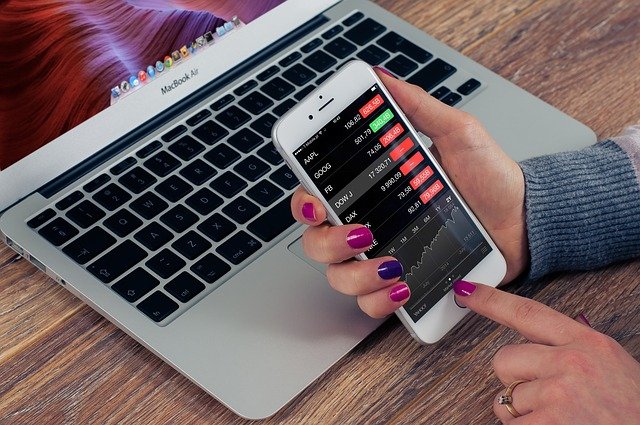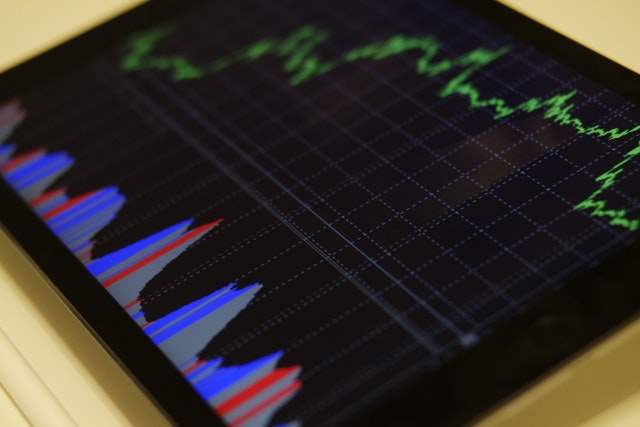What Is a Limit Order in Stock Trading and How Does It Work?

The stock market is a favorite among many investors because if you bet on the right stock, you can make a considerable amount of money. However, the downside of getting into a stock trade is that it’s hard to get the right closing price.
Stock prices constantly fluctuate in value, and that was best seen in November 2020, when the total market capitalization reached a record $95 trillion. Therefore, it can be hard for investors to keep up and make smart choices.
If you want to make smart investments, you need to educate yourself. And one of the first things you need to know is the concept of the limit order in stock trading.
What is a limit order in stocks?
In the world of stock trading, a limit order is a type of order that allows investors to sell and buy securities at a pre-set price in the future. When this set date comes, the investor can execute the trade if the stock price reaches this pre-defined level.
In simple terms, a limit order in stocks sets the maximum or minimum price limit an investor is prepared to buy or sell the stock for. If you as an investor use a limit order when buying stock, you are guaranteed to pay that price or one that’s smaller.
Let’s say that you want to buy a stock at $15 and you enter a limit order. If you do this, you wouldn’t pay any more money than the maximum price you would pay for that stock, which is $15, but you could still get the stock for less.
However, it’s important to note that even though the price limit you set is guaranteed, you can’t be certain that the order will be filled. And if you find yourself trading in a fast-moving market, you might miss your trading opportunity if you don’t move fast.
Four types of limit orders
Now that we’ve answered the question of what is a limit order in stocks, we need to take a look at the different types of limit orders:
- Buy limit. An order for purchasing a security at a specified price or below it. If you want to set a buy limit order, you need to place your order either below or at the current market bid price.
- Sell limit. An order for selling a security at a specific price or above it. If you want to make sure you get a good price, place your order either above or at the current market ask.
- Buy stop. An order for buying a security at a price that is higher than the current market bid. This type of limit order is only activated if and when the so-called “stop level” has been reached. When that happens, the order is converted into a limit or market order.
- Sell stop. An order for selling a security at a price that is lower than the current market price. Just like with the buy stop limit order, a sell stop is activated only when it reaches a specified price level.
How does a limit order work?

As we previously explained, a limit order is the pre-set price a buyer or a seller places on a security to determine its maximum or minimum price, based on whether they’re buying or selling it.
Let’s say a trader wants to buy stock from company X but doesn’t want to pay any more than the maximum price of $10 per share.
By putting a limit order on this stock, they will end up purchasing it at the price of $10 or lower. If a seller is interested in putting a limit order on the stock of company X of $10, they won’t sell any shares of stock for a price under $10.
There are multiple reasons why someone might want to use a limit order. One of the most common ones is when the price of a stock is falling or rising too quickly and the stock trader is worried they are going to get a bad fill from a market order.
Another instance in which a limit order is used by traders is when they aren’t watching a stock but have a price in mind for which they would like to buy or sell a security.
When should you use a limit order?
Traders use limit orders when they don’t want to miss a good opportunity or want to take control over their portfolio in a way they couldn’t under different circumstances. Simply put, they’re a great option for those who aren’t ready to trade stocks at that moment.
Let’s take a look at the different instances of when you should use a limit order:
- When you don’t want to keep an eye on the market. Trading can bring about a lot of different emotions and you can avoid that if you place a limit order. It will encourage you to engage in other activities without keeping an eye on the market and waiting for the perfect opportunity to trade.
- When you want to trade multiple shares. If you’re trading a large number of shares, a limit order can allow you to avoid slippage. If you place a market order, it’s hard to predict slippage. But when you’re dealing with limit orders, you already know the maximum amount of money you’ll pay for your shares of stock.
- When you’re hoping for a good price. If you have a specific price you want to pay for a stock or get while selling it, you can lock that price in with a limit order. But if you don’t get the price you’re hoping for, the order simply won’t be processed and there won’t be any harm.
- When you’re interested in trading low-volume stock. If you want to trade stock that doesn’t usually trade frequently, like for example shares of a small business, a limit order would be a good idea. This is because you can get the price you want without waiting a long period of time for the order to go through.
Limit order pros and cons

Just like with all investment tactics, it’s important to be aware of all the different pros and cons of limit orders before you get into them.
One of the biggest advantages is that you can set a price ceiling or a price floor, depending on whether you’re buying or selling stock. This is especially useful when operating in a fast-moving or volatile market.
Another great benefit is that limit orders can give you the opportunity to participate in extended-hours trading sessions including both pre-market and after-hours sessions. If you set your order during a standard exchange trading session, you can choose to carry it over to a future standard trading session.
As for the downsides, something that puts off some traders is the risk of no execution. If the security doesn’t reach the limit price you’ve set, you won’t get the deal you were hoping for. Especially since market orders are always executed before limit orders.
And finally, there is always a risk of partial fills when not all of the shares are executed in order, leaving some of them unfilled. But if you apply special conditions to limit orders, you can lower the investment risks of partial executions.
Limit order vs. market order vs. stop order vs. stop-limit order
These are all important terminologies, but they can be a bit confusing for beginners. Let’s go through each of them so you can get a full grasp of what they mean.
Limit order
As we already answered the question of what is a limit order in stocks, here's a quick reminder. A limit order is a special type of order that investors make when they’re hoping to sell or buy a security such as a stock at a pre-set price in the future.
Market order
The two main execution options when it comes to price are limit orders and market orders. A market order is a transaction that is meant to be executed as soon as possible at the current price. This transaction is done at the best price that is currently available.
When it comes to market orders, they are executed immediately unlike limit orders. You can’t guarantee the price of the transaction and it can either be lower or higher than the current market price when the order goes through.
However, while you can’t guarantee that a limit order will be executed, you can be sure that a market order will be.
Stop order
Stop orders are very similar to market orders as they’re both placed when an investor wants to reach a certain price for a stock. But the difference is that a stop order, which is also known as a stop-loss order, is triggered at the stop price.
As for a buy stop order, it is stopped when it reaches the given price or higher, and a buy stop order does the same when it reaches the given price or lower. So while a limit order by design is meant to capture gains, a stop order is meant to minimize losses.
Stop-limit order
One aspect of limit orders is that they’re visible to the entire market as soon as you place them. That way, other traders know that you’re interested in making the trade and what price you’re looking to get. A stop order, on the other hand, doesn’t become available until the trigger price you set is met.
It sets a stop order that ensures the order isn’t activated until the stop price is reached. And once it does, you can set a limit order to make sure your trade doesn’t exceed your given limit price and combine it into a stop-limit order.
Summary
Investing in the stock market comes with a lot of moving and confusing parts, which beginner investors usually find overwhelming. When you’re putting an investment strategy together for the first time, it’s vital that you understand all of the different order parts that exist and how they come into play.
Limit orders are a great beginner order because they give you more control over how much money you’re willing to invest or hoping to gain. If you’re just starting out and are feeling overwhelmed or insecure, limit orders will help put your mind at ease.


